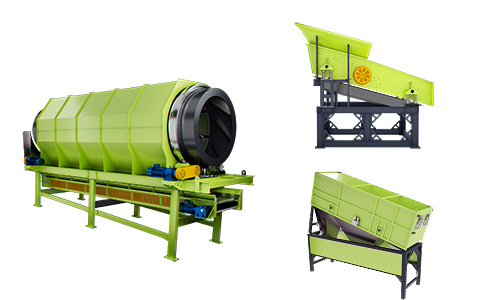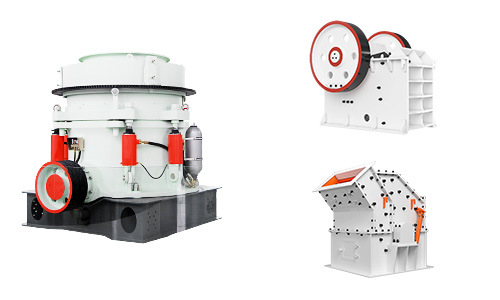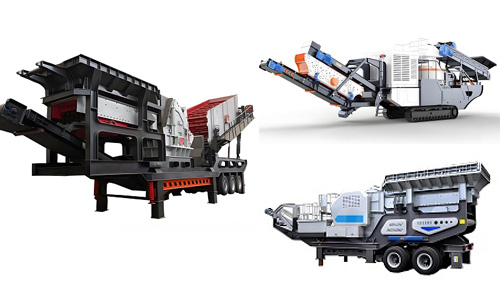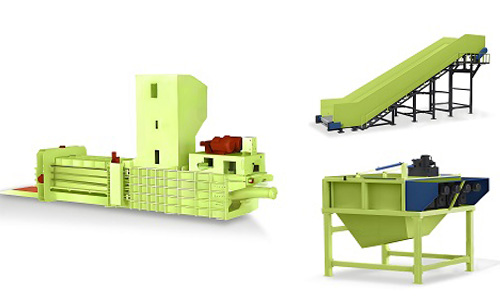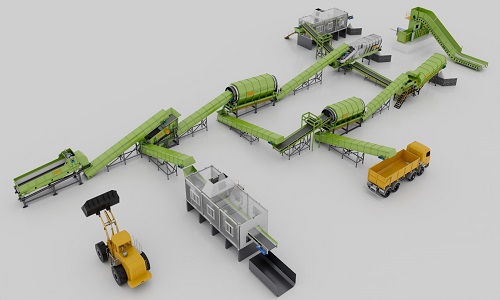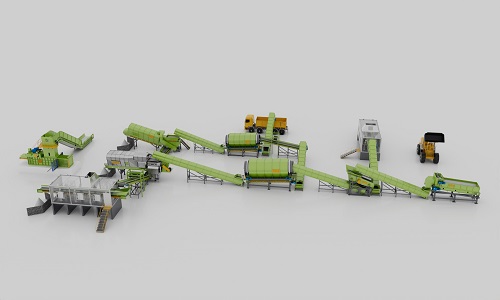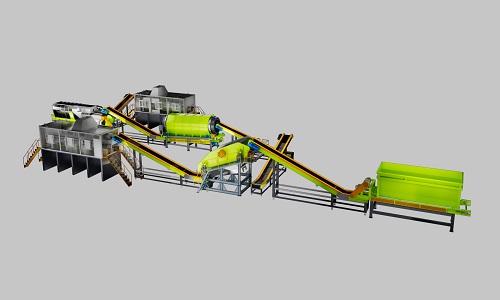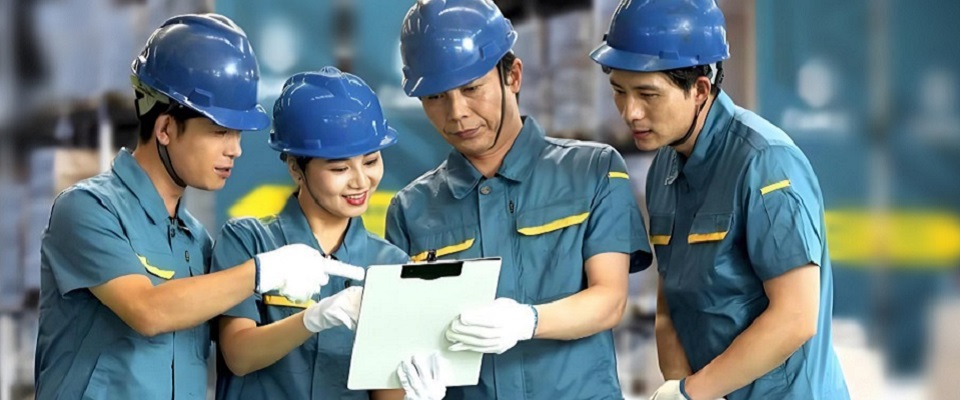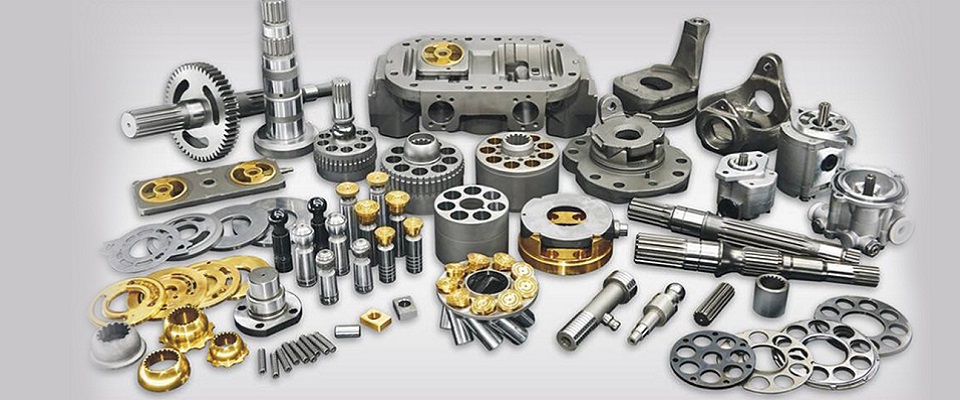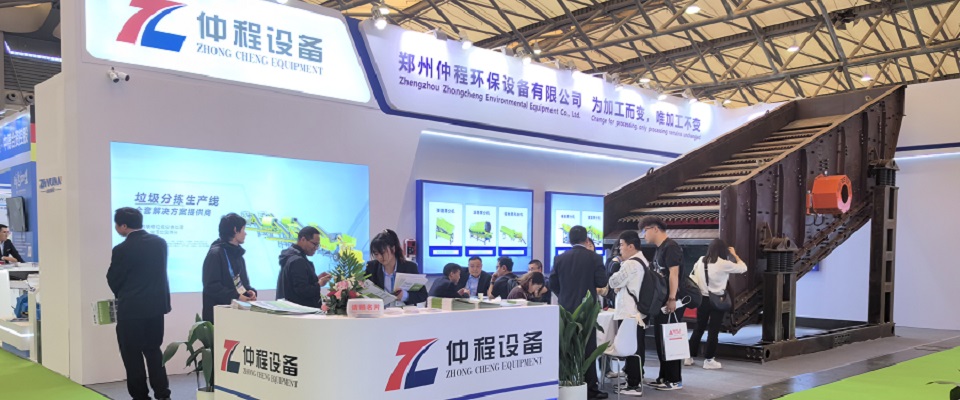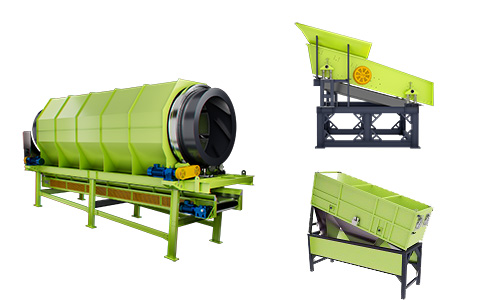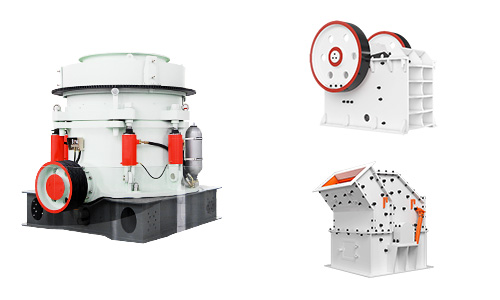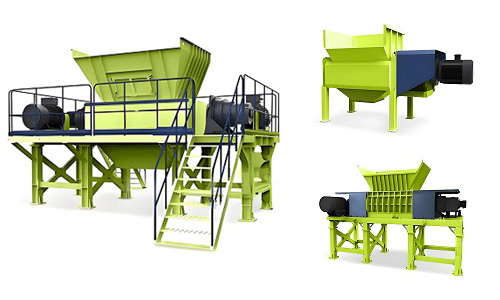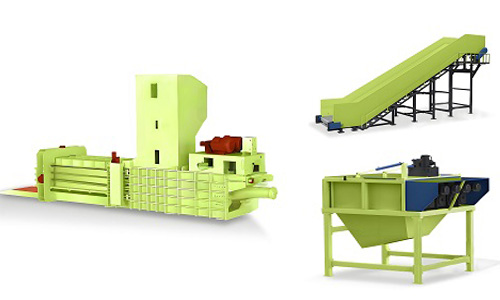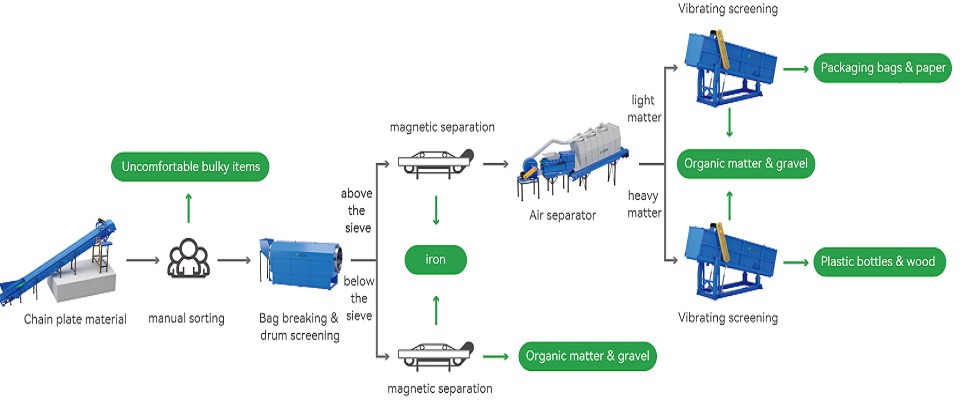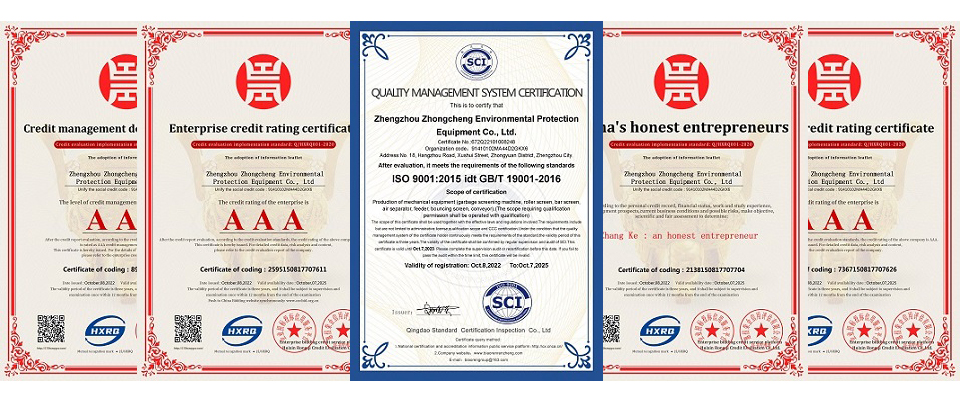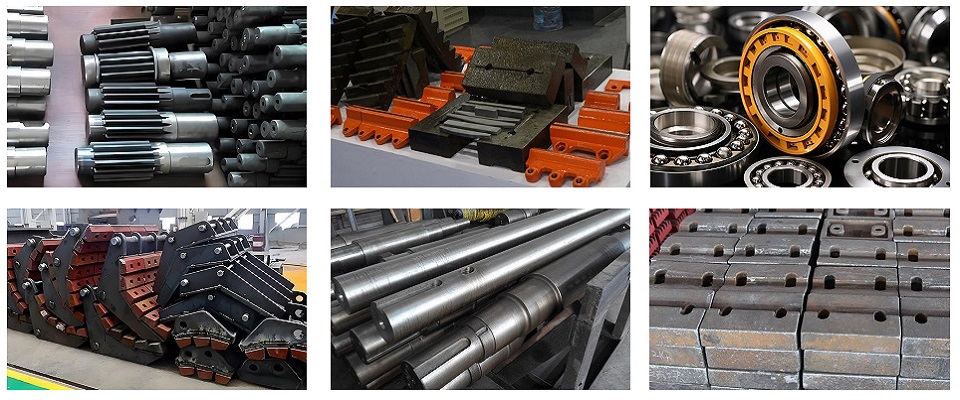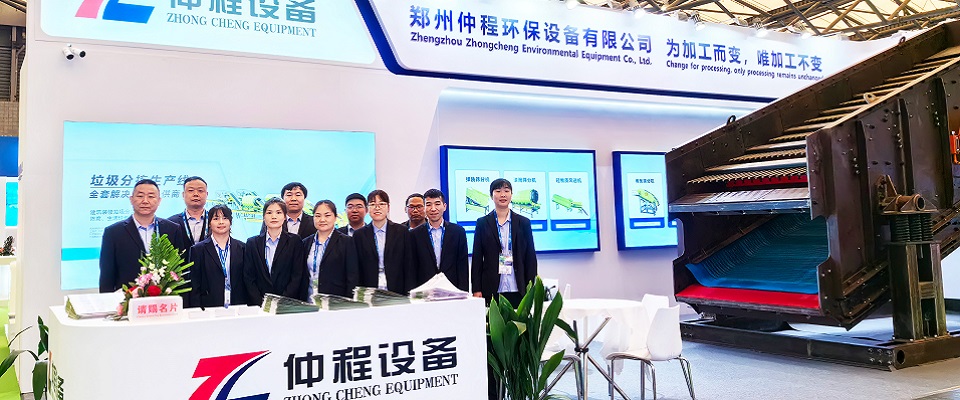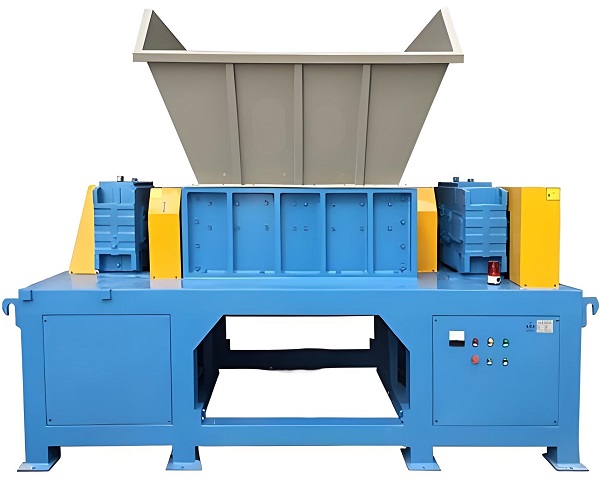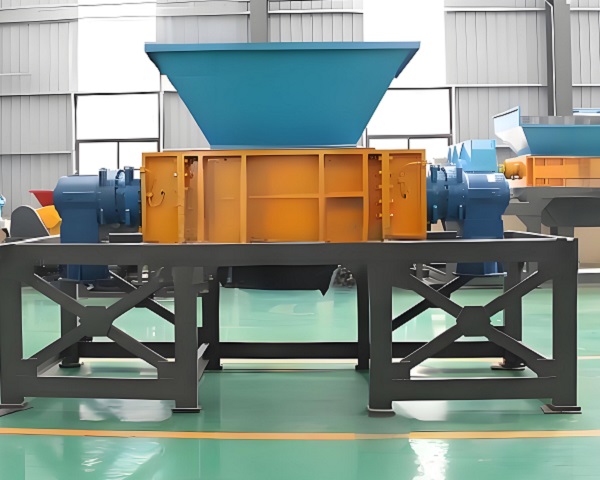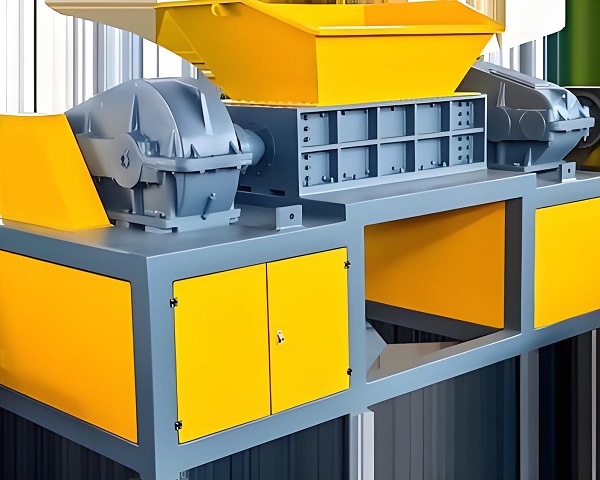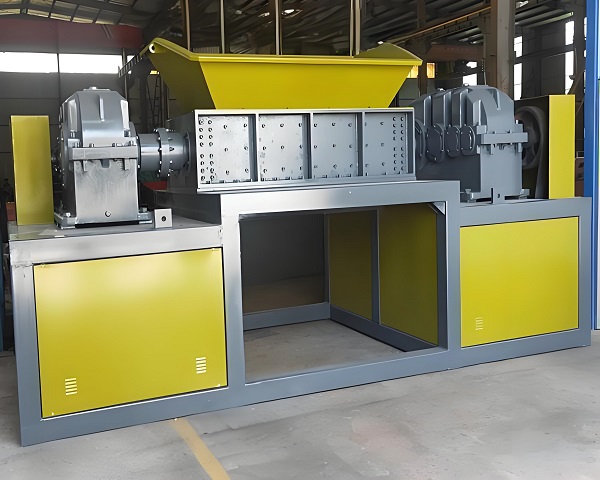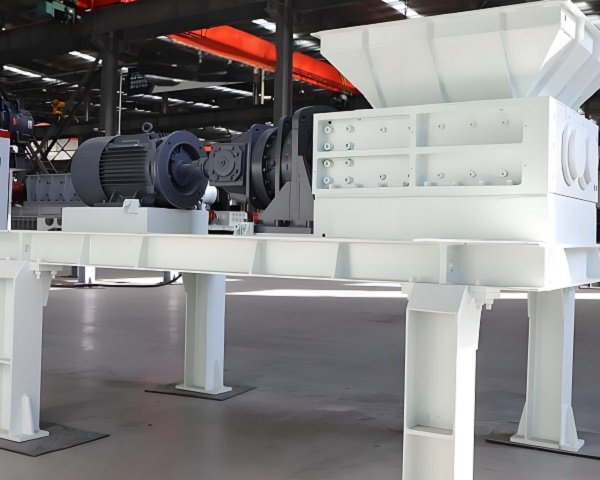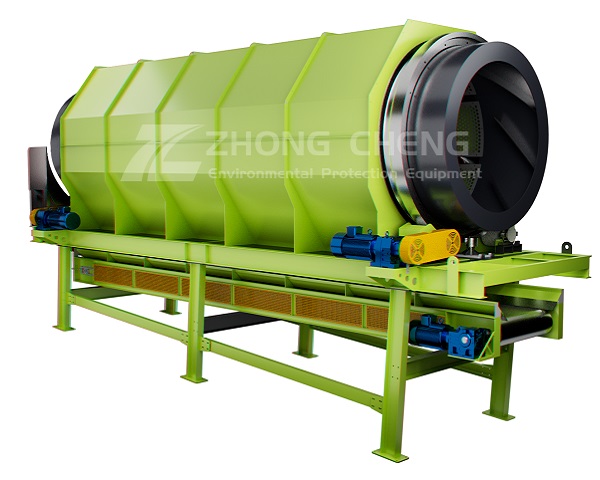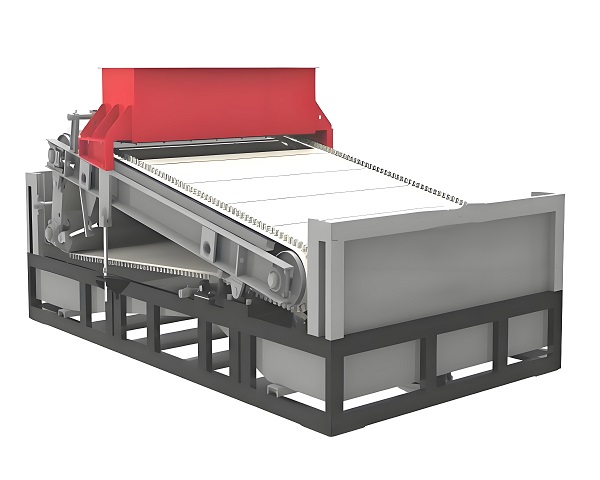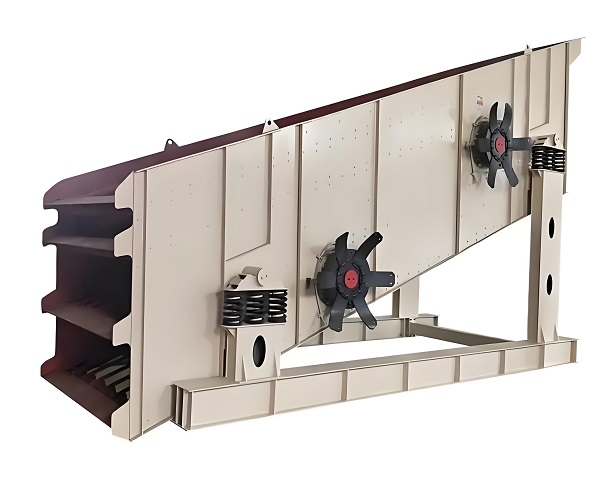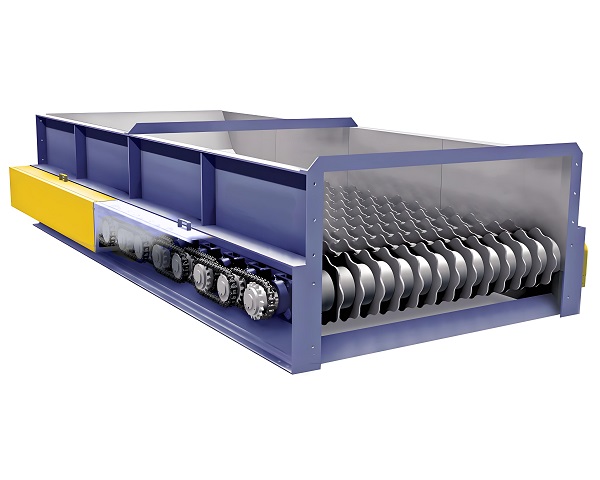A Trommel Screen is a rotary drum screening machine widely used in waste processing, mining, and construction industries. It efficiently separates materials by ......
What is the Double-Shaft Food Waste Shredder
With the vigorous development of the food industry and the improvement of people's living standards, the amount of food waste generated is increasing. How to deal with these wastes efficiently and environmentally friendly has become an urgent problem to be solved. The double-shaft food waste grinder came into being and became an important equipment in the field of food waste treatment.
The working principle of the double-shaft food waste grinder is based on a unique double-shaft design. It is equipped with two synchronous counter-rotating knife shafts, on which sharp and sturdy blades are installed. When the food waste enters the crushing chamber, the two knife shafts drive the blades to cooperate with each other, and a strong shear force, tearing force and extrusion force are formed between the blades, just like two precise "scissors", which quickly cut and tear various food waste into fine particles or crumbs. This efficient crushing method enables it to handle various types of food waste, whether it is soft fruit and vegetable residues, leftovers, or bones with a certain hardness, etc., it can easily cope with it.
The equipment has many significant advantages. In terms of processing efficiency, the double-shaft design greatly improves the crushing speed, and can process a large amount of food waste in a short time to meet the needs of industrial production. In terms of crushing effect, the particle size of the output material is uniform, which is conducive to subsequent processing processes, such as anaerobic fermentation to produce biogas, aerobic composting, etc., and can improve the recycling rate of resources. At the same time, the equipment operates stably and reliably, adopts a sturdy and durable frame structure and high-quality transmission components, reduces the probability of failure and reduces maintenance costs.
In terms of application scenarios, the double-axis food waste crusher has a wide range of applications. In food processing plants, it can handle scraps and expired foods generated during the production process; in the catering industry, such as hotels, restaurants, schools and hospital canteens, it can promptly handle a large amount of food residues generated daily to avoid garbage accumulation and odor.
The double-axis food waste crusher also has good environmental benefits. It crushes food waste into small particles, reduces the volume of garbage, reduces transportation and storage costs, and also reduces the pollution of garbage to the environment, which is in line with the concept of sustainable development.
With its efficient processing capacity, stable operating performance and wide range of applications, the double-axis food waste crusher has become an ideal choice in the field of food waste treatment, providing strong technical support for solving the problem of food waste.
Operating principle of Double-Shaft Food Waste Shredder
The double-shaft food waste grinder is a device specially used for processing food waste. Its working principle is based on a unique mechanical structure and mechanical principle. Through the synergy of two rotating knife shafts, food waste is broken into fine particles for subsequent processing.
Core structure foundation
The core component of the double-shaft food waste grinder is two knife shafts that are parallel to each other and rotate synchronously in the opposite direction. There are multiple blades evenly distributed on each knife shaft. These blades are usually made of high-strength, high-wear-resistant alloy steel, with sharp edges and sturdy blades, which can withstand the impact and wear of food waste. The knife shaft is installed on a sturdy frame and connected to the motor through a transmission device to ensure that the knife shaft can rotate stably and efficiently.
Detailed explanation of the crushing process
When food waste is put into the feed port of the grinder, it will first enter the crushing chamber between the two knife shafts. At this time, the two knife shafts begin to rotate synchronously in the opposite direction, driving the blades to move relative to each other. The relative movement between the blades generates strong shearing force, tearing force and extrusion force, just like two crossed scissors, cutting and tearing the food waste.
For softer food waste, such as leftovers, fruit and vegetable peels, etc., the blades can easily cut them into small pieces. For some harder food waste, such as bones, nut shells, etc., the blades crush them through strong extrusion force. During the crushing process, the food waste will be constantly turned and squeezed between the blades to ensure that each part can be fully crushed.
Discharge and particle size control
After crushing, the food waste will become fine particles, which will be discharged from the discharge port of the grinder. In order to control the discharge particle size, the grinder is usually designed with adjustable blade spacing. By adjusting the spacing between the blades, the degree of cutting and squeezing of the food waste by the blades can be changed, thereby controlling the size of the crushed particles. Generally speaking, the smaller the blade spacing, the finer the crushed particles; the larger the blade spacing, the coarser the crushed particles.
The double-shaft food waste grinder uses two synchronously counter-rotating knife shafts and the blades on them, and uses multiple mechanical actions such as shearing, tearing and squeezing to achieve efficient crushing of food waste, which provides convenience for the subsequent treatment and resource utilization of food waste.
Advantages and features of Double-Shaft Food Waste Shredder
The double-shaft food waste shredder performs well in processing food waste and has many significant advantages and characteristics, providing strong support for the efficient processing and resource utilization of food waste.
1. Efficient crushing capacity
Powerful power and knife shaft design: The equipment is equipped with a high-power motor to provide sufficient power for the knife shaft to ensure stable and high-speed operation. Its unique double-shaft design enables the two knife shafts to rotate synchronously in opposite directions, forming strong shearing, tearing and squeezing forces between the blades. Like two crossed and high-speed rotating sharp blades, it can quickly cut and tear various food wastes, such as hard bones, large pieces of fruits and vegetables, into fine particles, greatly improving the crushing efficiency.
2. Large processing capacity: Compared with the single-shaft shredder, the double-shaft design increases the crushing area and can process more food waste at the same time, meeting the needs of large-scale food waste processing. It is suitable for places with large amounts of waste such as catering companies and food processing plants.
3. Excellent crushing effect
Uniform particle size of the output: By precisely designing the blade spacing and shape, the double-shaft food waste shredder can ensure that the size of the crushed food waste particles is uniform. Uniform particle size is conducive to subsequent treatment processes. For example, when anaerobic fermentation produces biogas, it can improve fermentation efficiency and gas production; when aerobic composting is carried out, it can speed up composting and improve composting quality.
4. Adapt to a variety of garbage types: Whether it is soft leftovers, fruit peels, or bones and nut shells with a certain hardness, the equipment can effectively crush them and show strong adaptability.
5. Stable and reliable operation
Sturdy and durable structure: The frame and knife shaft are made of high-strength steel to ensure that the equipment will not deform or damage under long-term high-load operation. The blade has undergone special heat treatment, high hardness, good toughness, strong wear resistance, and extended service life.
Safety protection device: Equipped with safety devices such as overload protection and leakage protection. When the equipment encounters abnormal conditions such as overload and leakage, it can automatically shut down to avoid equipment damage and safety accidents, and ensure the personal safety of operators.
6. Environmental protection and energy saving
Reduce garbage volume: Crushing food waste into small particles can greatly reduce the volume of garbage, reduce transportation costs and storage space requirements. At the same time, it reduces the amount of landfill and reduces environmental pollution.
Convenient resource utilization: The crushed food waste is convenient for subsequent resource utilization, such as making organic fertilizers, biofuels, etc., realizing the transformation of waste into treasure, which is in line with the concept of sustainable development.
Technical Parameter Table of Double-Shaft Food Waste Shredder
| Item | Unit | FS-500 | FS-800 | FS-1000 |
|---|---|---|---|---|
| Total Power | kW | 11×2 | 22×2 | 37×2 |
| Main Shaft Speed | rpm | 18–25 | 16–20 | 10–16 |
| Blade Thickness | mm | 10/15 | 20/30 | 30/40 |
| Number of Blades | pcs | 20–30 | 20–40 | 30–50 |
| Feeding Port Size | mm | 500×400 | 800×600 | 1000×800 |
| Capacity | t/h | 0.5–1.5 | 1.5–3 | 3–5 |
| Output Size | mm | ≤50 | ≤60 | ≤80 |
| Overall Dimensions (L×W×H) | mm | 1800×1000×1600 | 2200×1400×1800 | 2800×1800×2000 |
| Weight | t | 2.5 | 4.8 | 7.5 |
| Control System | - | Automatic | Automatic | Automatic |
If you have any special requirements, we will customize according to your special needs.
Product Picture Display of Double-Shaft Food Waste Shredder
FAQ about Double-Shaft Food Waste Shredder
>1. What is the working principle of the double-shaft food waste shredder?
The double-shaft food waste shredder relies on two synchronously counter-rotating blade shafts to achieve crushing. The blade shaft is equipped with sharp blades. When the food waste enters the crushing chamber, the two blade shafts drive the blades to cooperate with each other, and a strong shear force, tearing force and extrusion force are formed between the blades. Just like two crossed scissors, the food waste is quickly cut and shredded into fine particles or crumbs for subsequent processing or discharge. This working method can efficiently handle food waste of various textures and shapes, and the crushing process is stable and reliable.
>2. What types of food waste can the device handle?
The double-shaft food waste shredder can handle many types of food waste. Including common fruit and vegetable residues, such as apple cores, banana peels, vegetable leaves, etc.; leftovers, such as rice, noodles, meat residues; and bones, such as chicken bones, fish bones, etc. However, for particularly hard bones, such as cow bones, pig bones, etc., the equipment may need higher power and stronger blades to effectively handle them. In addition, it can also handle some food waste such as bread crumbs and eggshells, and has a wide range of applications.
>3. What are the advantages of a double-shaft pulverizer compared to a single-shaft pulverizer?
The advantages of a double-shaft pulverizer are obvious. In terms of crushing efficiency, the synchronous reverse rotation of the double shafts produces greater force, which can crush food waste into small particles faster, and the processing speed is several times faster than that of a single-shaft pulverizer. In terms of crushing effect, the double-shaft design makes shearing and tearing more complete, and the output particle size is more uniform. In addition, the double-shaft pulverizer runs more stably, can withstand greater loads, and is less likely to get stuck. When a single-shaft pulverizer is processing harder or larger pieces of food waste, it may be less efficient and prone to failure.
>4. What is the blade material and replacement cycle of the equipment?
The blade of the equipment is usually made of high-strength, high-wear-resistant alloy steel, such as 3Cr13. This material has high hardness and good toughness, and can effectively resist the wear and impact of food waste. The replacement cycle of the blade depends on the frequency of use and the type of food waste processed. If a large amount of food waste is processed every day, especially when it contains more hard objects such as bones, the blade will wear faster and may need to be replaced every six months to a year. If the frequency of use is low and the food waste processed is softer, the blade replacement cycle can be extended to one to two years.
>5. How to ensure the operating stability of the double-shaft food waste crusher?
To ensure the operating stability, the equipment adopts a sturdy and durable frame structure that can withstand greater crushing force. The two knife shafts are connected through a precise transmission system to ensure synchronous speed and smooth operation. At the same time, the equipment is equipped with an overload protection device. When encountering too hard or too large food waste causing excessive load, it can automatically shut down to avoid equipment damage. In addition, regular maintenance is also crucial, such as checking the wear of the blades, lubricating the transmission parts, etc., which can effectively extend the service life of the equipment and ensure its stable operation.
>6. What role does this equipment play in environmental protection?
The double-shaft food waste crusher has made significant contributions to environmental protection. It can quickly crush food waste into small particles for subsequent processing. On the one hand, it reduces the volume of food waste, reduces transportation costs and energy consumption during transportation, and reduces exhaust emissions. On the other hand, the crushed food waste can be used as raw material for organic fertilizer, realizing resource utilization, reducing dependence on landfills and incineration plants, reducing leachate pollution caused by landfills and exhaust gas pollution caused by incineration, and helping to improve environmental quality.
>7. What is the noise level of the double-shaft food waste grinder?
The noise level of the double-shaft food waste grinder is generally within an acceptable range. During normal operation, the noise is usually between 60 and 80 decibels. The equipment adopts advanced shock absorption and sound insulation design, such as installing shock pads and sound insulation covers, which effectively reduces the operating noise. However, the noise level will also be affected by the type of food waste processed and the load of the equipment. When processing harder food waste or with a larger load, the noise may increase slightly. But overall, it meets relevant environmental protection standards and will not cause serious noise interference to the surrounding environment.
>8. What are the key points for equipment maintenance?
The key points of maintenance include: Regularly check the wear of the blade. If the blade is found to be blunt or has a gap, it should be replaced or polished in time; check the transmission parts, such as the tension of the belt and chain, to ensure normal transmission; regularly lubricate the bearings to reduce wear; clean the residual food waste in the crushing chamber to prevent blockage and bacterial growth; check the electrical system to ensure that the line connection is normal without looseness or short circuit. Through regular maintenance, the performance of the equipment can be guaranteed to be stable and the service life can be extended.
>9. What factors should be considered when purchasing a double-shaft food waste crusher?
There are many factors to consider when purchasing. The first is the processing capacity. Choose a suitable model according to the amount of food waste generated daily. The second is the blade material and design. High-quality blades can improve crushing efficiency and service life. In addition, pay attention to the stability and reliability of the equipment, such as the frame structure, transmission system, etc. In addition, after-sales service is also very important, including installation and commissioning, training, maintenance, etc. In terms of price, you can't just look at the low price. You should consider the performance and quality of the equipment comprehensively and choose a product with high cost performance.
>10. What is the investment cost and return of the double-shaft food waste crusher?
In terms of investment cost, the price of equipment varies depending on the model, brand and configuration, generally ranging from several thousand yuan to tens of thousands of yuan. It also includes installation and commissioning costs, subsequent maintenance costs, etc. In terms of return, the use of this equipment can reduce the transportation and processing costs of food waste and reduce the negative impact on the environment. At the same time, the crushed food waste can be sold as raw materials for organic fertilizers, bringing certain economic benefits. In the long run, its advantages of efficient processing and resource utilization can enable investors to recover costs and make profits in a relatively short period of time, and the return on investment is relatively considerable.
